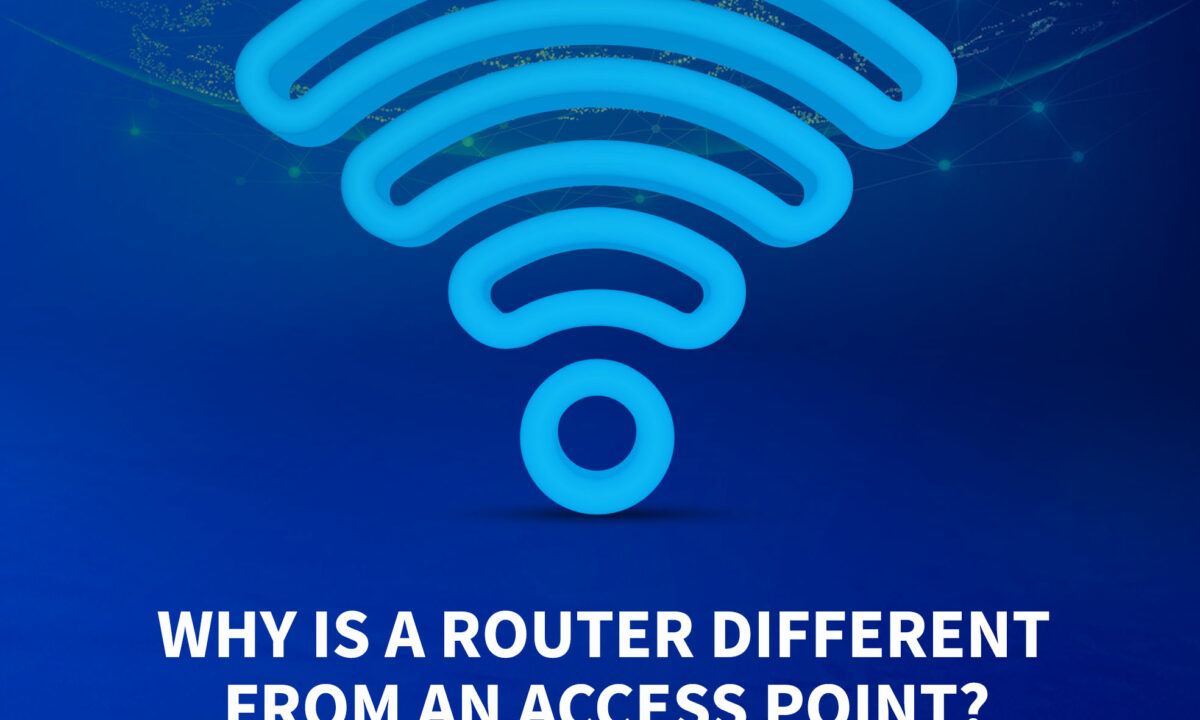Blog

Why Is a Router Different From An Access Point?
Whenever we deal with the networking world, we often come across terms like “router” and “access point”. While both are fundamental components of a modern network, they serve distinct roles in facilitating seamless connectivity. Let’s look into both of their unique functions, capabilities and the pivotal roles the access points and routers in Dubai play in shaping our interconnected digital landscapes.
Routers
At its core, a router is the traffic director of your network, orchestrating the flow of data between devices within your local network and the broader internet. Consider it as the intelligent traffic cop at a bustling intersection, efficiently directing data packets to their intended destinations.
- Traffic Routing and IP Addresses: Routers assign unique IP addresses to devices connected to the local network, enabling them to interact and identify one another. When connecting to the internet, NAT enables several devices connected to the same local network to use a single public IP address. This contributes to protecting the finite supply of public IP addresses.
- Security and firewalls: By monitoring and regulating inbound and outgoing network traffic, firewalls are often built into routers to improve security.
- Dynamic Host Configuration Protocol (DHCP): Routers often incorporate DHCP to dynamically allocate IP addresses to devices on the local network. This dynamic assignment enhances the efficiency of the network, eliminating the need for manual configuration of IP addresses.
Access Points
Conversely, an access point allows wireless devices to connect to a wired network, expanding the reach of a wireless network.
- Wireless Signal Broadcast: Devices can connect to the network from farther away or from places with spotty service thanks to access points that boost the wireless signal.
- SSID and Wireless Authentication: Access points define the Service Set Identifier (SSID), essentially the network’s name, making it identifiable to users. They also manage wireless authentication, ensuring that only authorized users with the correct credentials can access the network.
- Extension of Network Range: Access points contribute to expanding the reach of a wireless network. In scenarios where the primary router’s signal is insufficient to cover a large area, strategically placed access points act as amplifiers, extending the network’s footprint.
Understanding the distinction between a router and an access point unveils the intricate dance of connectivity within a network. These devices often work in harmony, each contributing its unique set of capabilities to create a seamless web of interconnected devices.
In a typical home network, a router often combines the functionalities of a router, switch, and access point. This integration simplifies the setup and management of the network for users, offering a consolidated solution that caters to both wired and wireless connectivity needs.
In larger networks, especially in enterprise environments, the roles of routers and access points are more distinctly separated. Routers manage the flow of data between different networks, while access points strategically placed throughout the premises ensure pervasive and reliable wireless connectivity. As Fortinet products are mostly preferred by organizations, getting Fortinet access points in UAE from top distributors like Networkise is advisable.
Routers and access points play distinct yet harmonious roles helping in seamless operations in our network. While a router orchestrates the flow of data, ensuring its secure and efficient journey, an access point extends the network’s embrace into the wireless realm, connecting our devices seamlessly. Users should understand the small nuances of these devices if they want to optimize their network and foster a connected ecosystem

